
Dr.Mohammed Jasim
COMMUNITY MEDICIN
M.B.Ch.B
FICMS/CM
Sunday, October 12,
2014
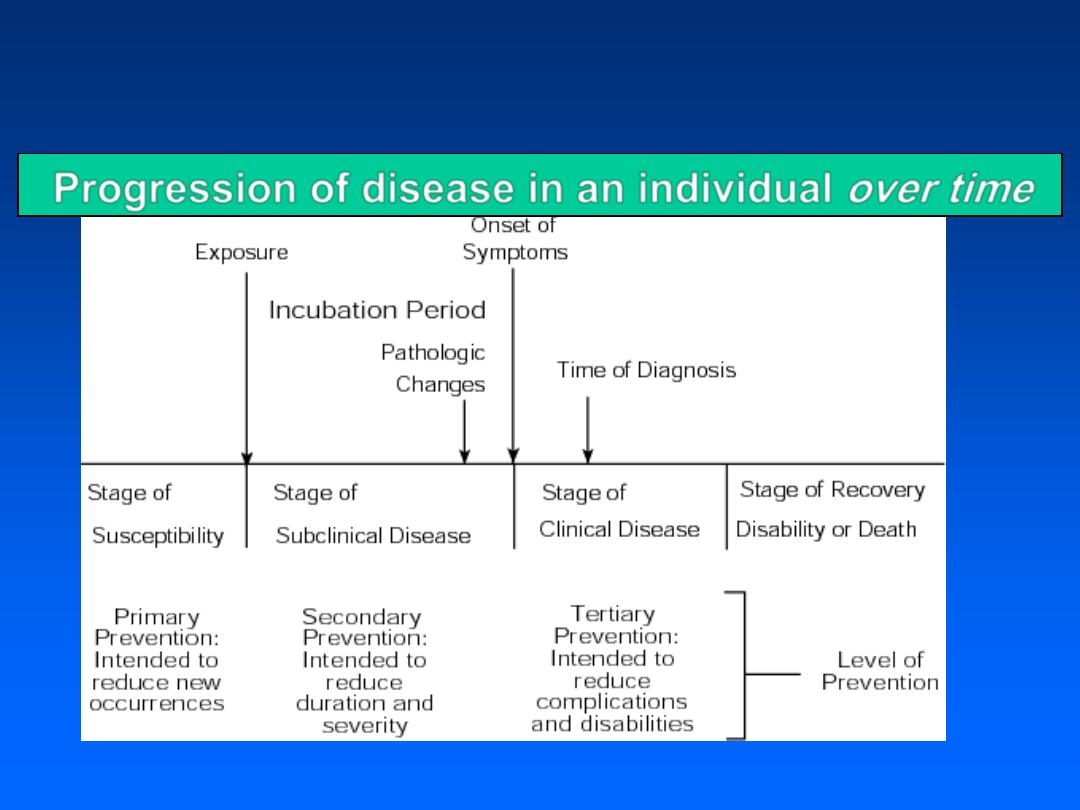
Natural History of
Disease
2
Progression of disease in an individual
over time
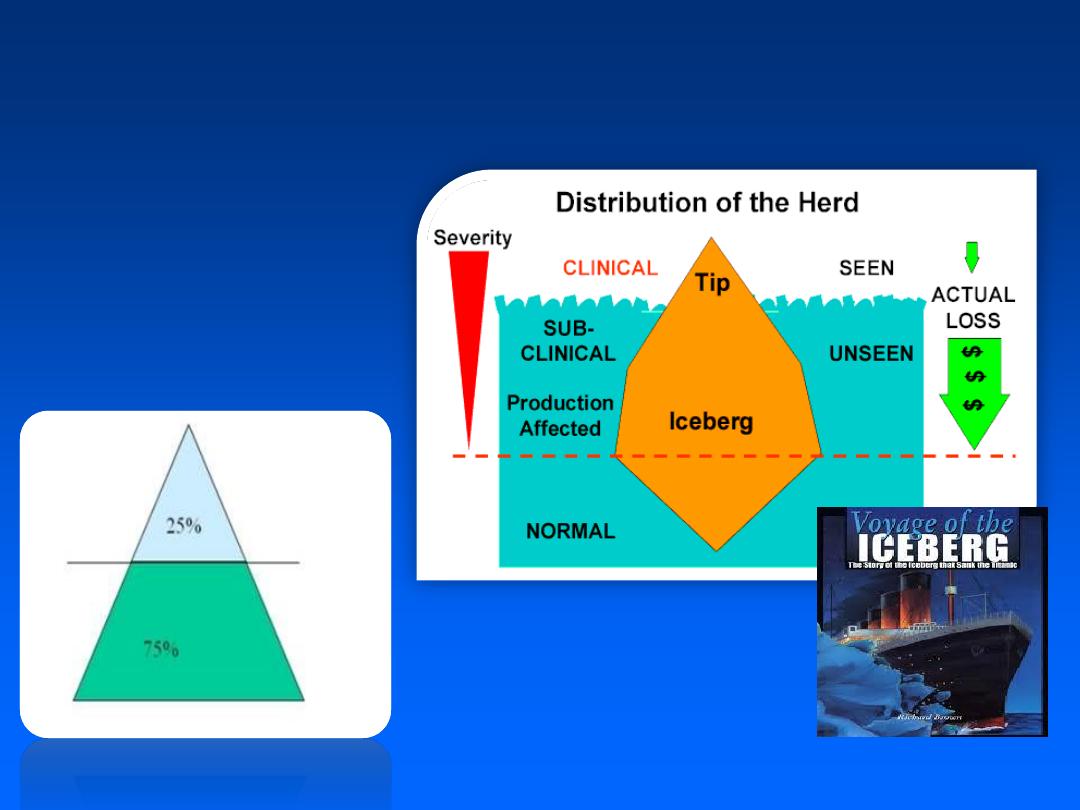
Epidemiological Iceberg
• Only the tip of the
iceberg may be
detectable
3

Descriptive Studies:
Person, Place and Time

Descriptive Epidemiology
• Includes activities related to
characterizing the distribution of
diseases within a population
Analytical Epidemiology
• Concerns activities related to
identifying possible causes for the
occurrence of diseases

Descriptive Epidemiology
• In Descriptive Epidemiology:
Who
? -
person
Where
? -
place
When
? -
time
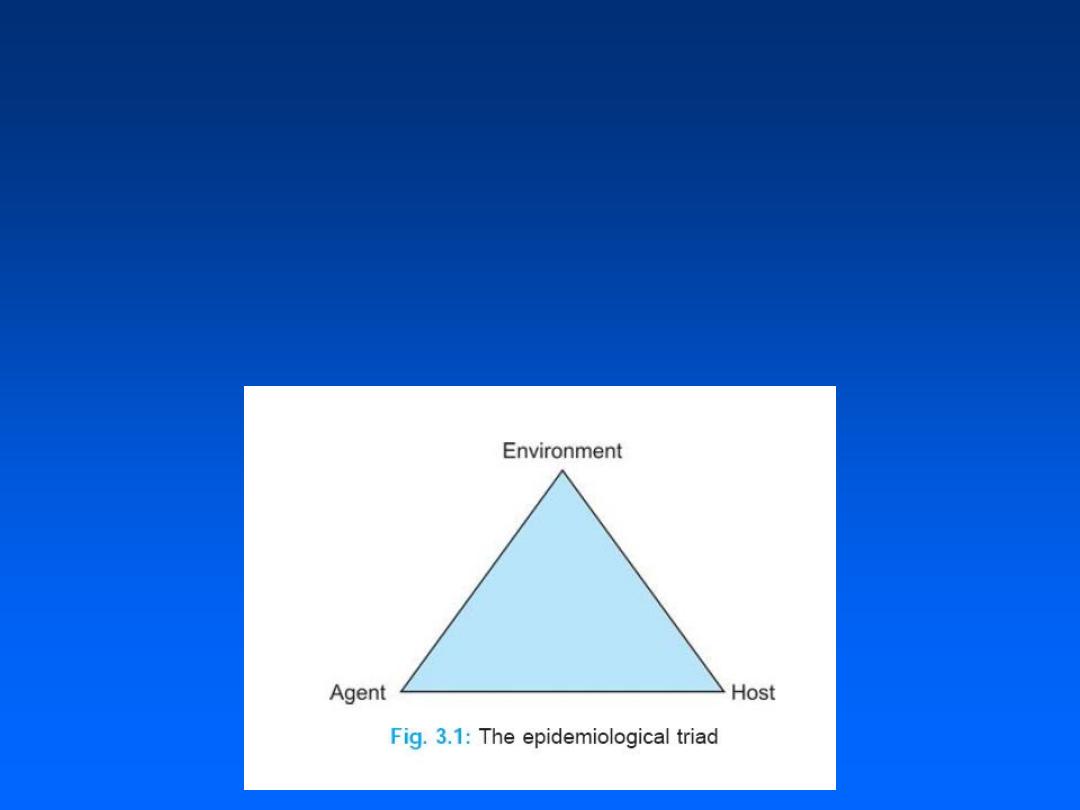
The occurrence and manifestations of any disease,
whether communicable or non communicable, are
determined by the interactions between the
agent
, the
host
and the
environment
, which together constitute
the epidemiological triad (Fig. 3.1).
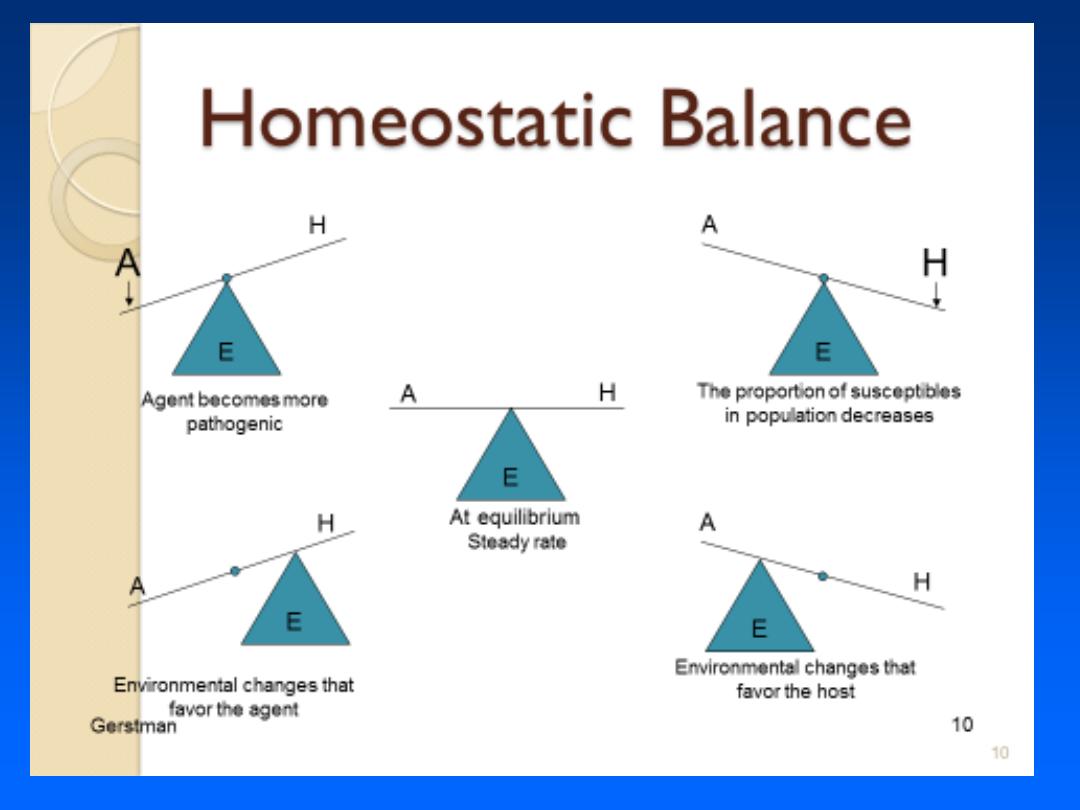

The 5W's of descriptive epidemiology:
• What = health issue of concern
Who = person
Where = place
When = time
Why/how = causes, risk factors, modes of
transmission

Descriptive Epidemiology
PERSON
PLACE
TIME
Think of this as the standard
dimensions used to track the
occurrence of a disease.

Person
• WHO
is getting the disease?
• Many variables are involved and
studied, but factors such as sex, age
& race often have a major effect.

Characteristics of Person
• Age
• Sex
• Ethnic group
• Socioeconomic status
• Nativity
• Religion
• Marital status
• Occupation
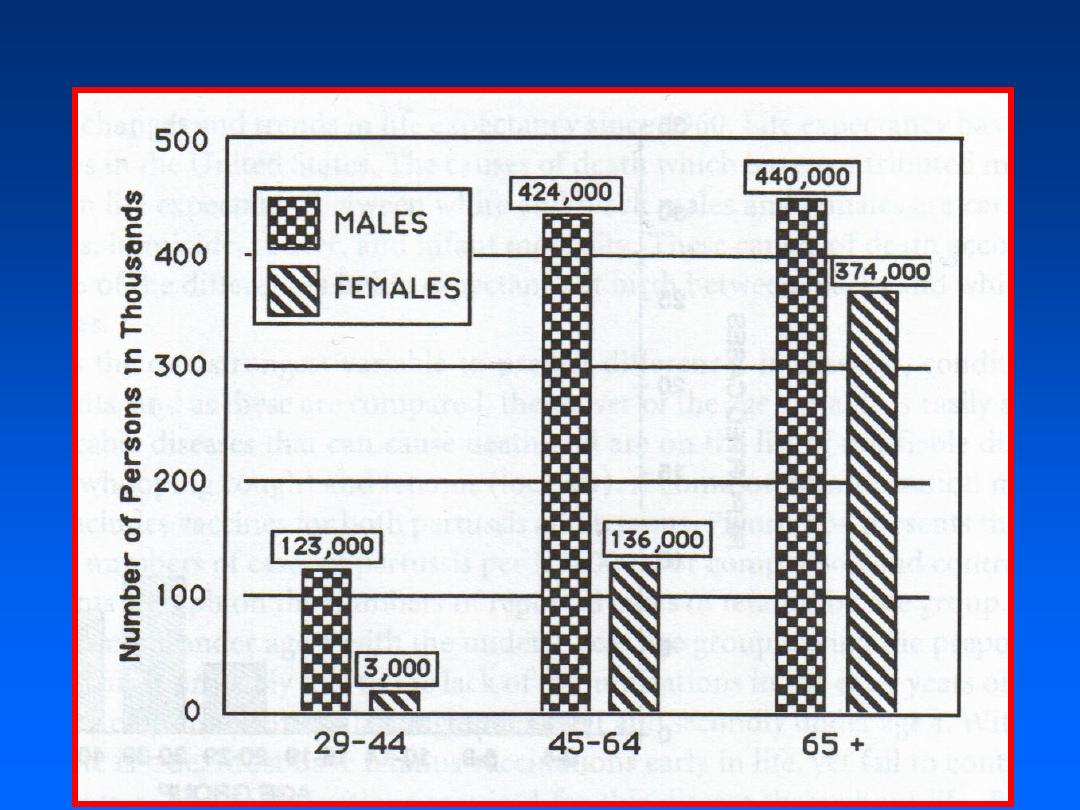
Sex

Time
• WHEN
does the disease occur?
“Temporal”
Range from hours to decades
• Type of disease dictates “time”
element to be used
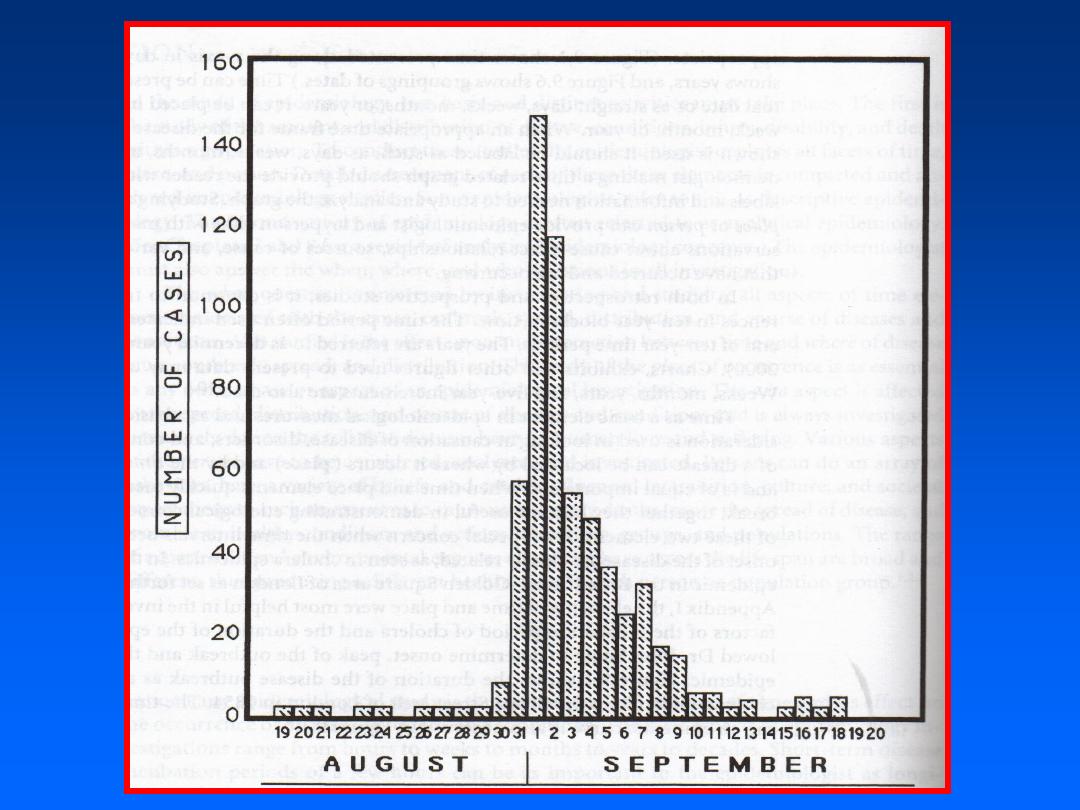

Characteristics Relating to Time
• Secular change (long-term)
• Point epidemics (short-term)
• Cyclic trends
• Seasonal variation

Point Epidemics
• Short-term changes occur over
limited time frames
Hours
Days
Weeks
Months
• Used for short-term exposures or
diseases with short incubation
and/or illness durations
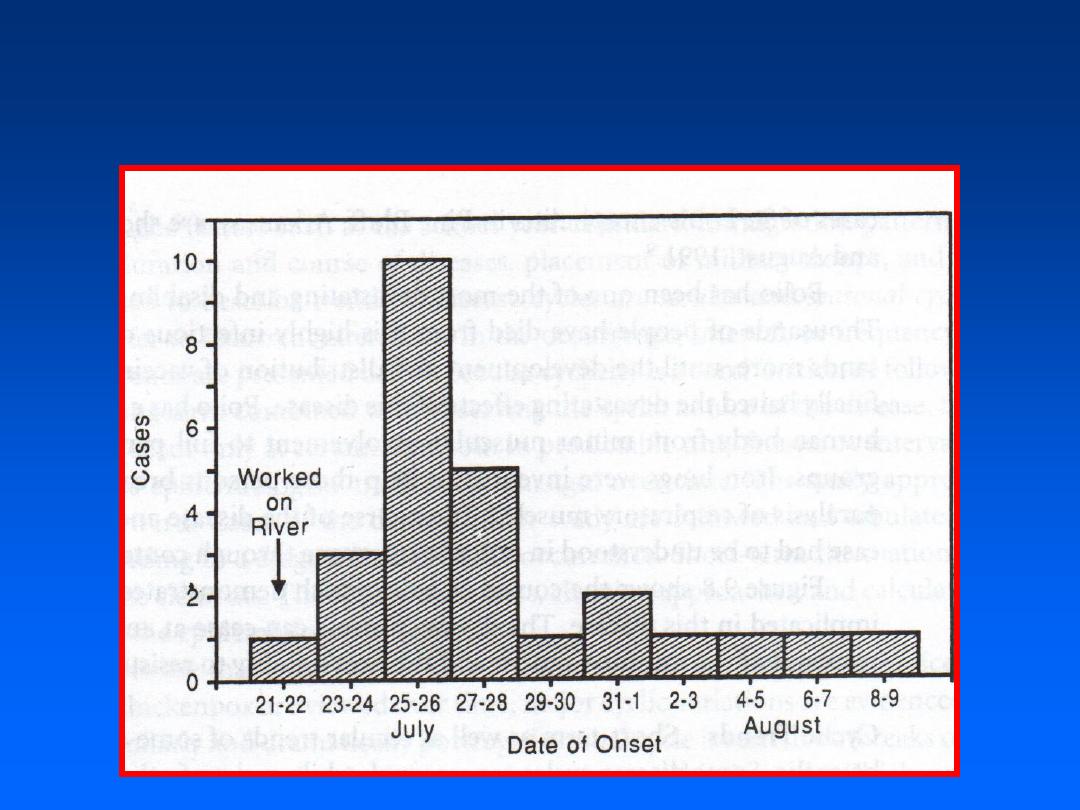
Point Epidemics
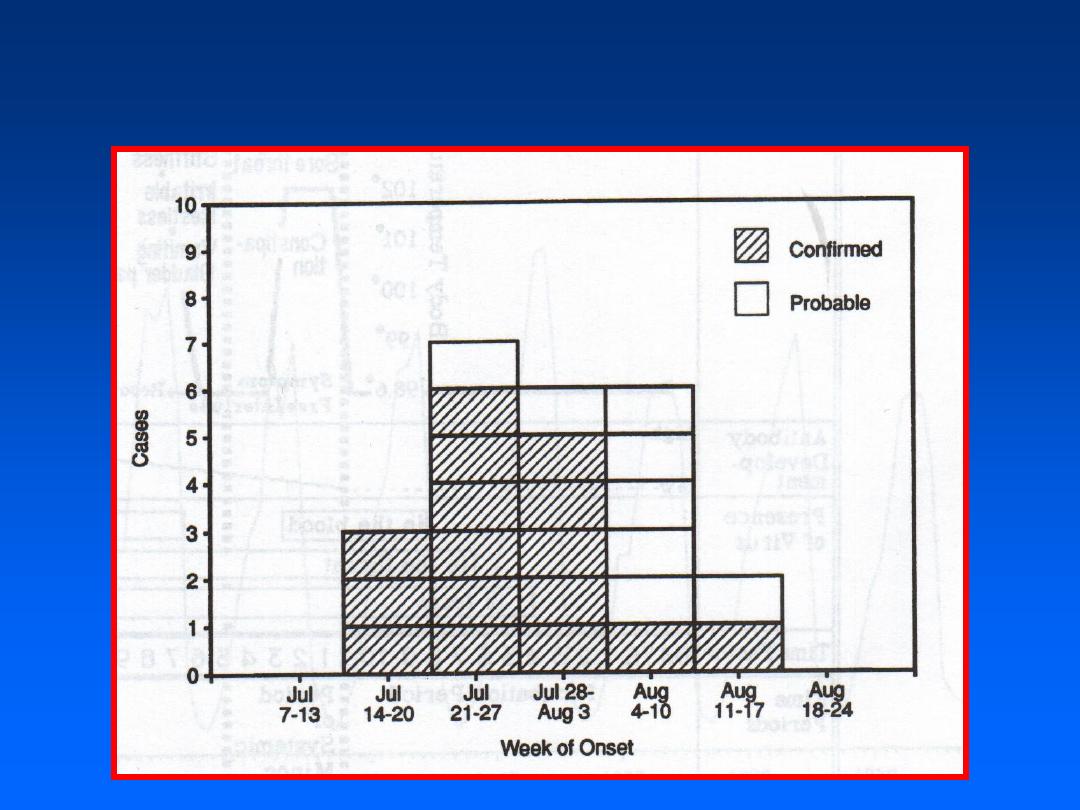
Point Epidemics

Place
• WHERE
are the rates higher? lower?
• Geographic location of source
• Geographic location of reservoir
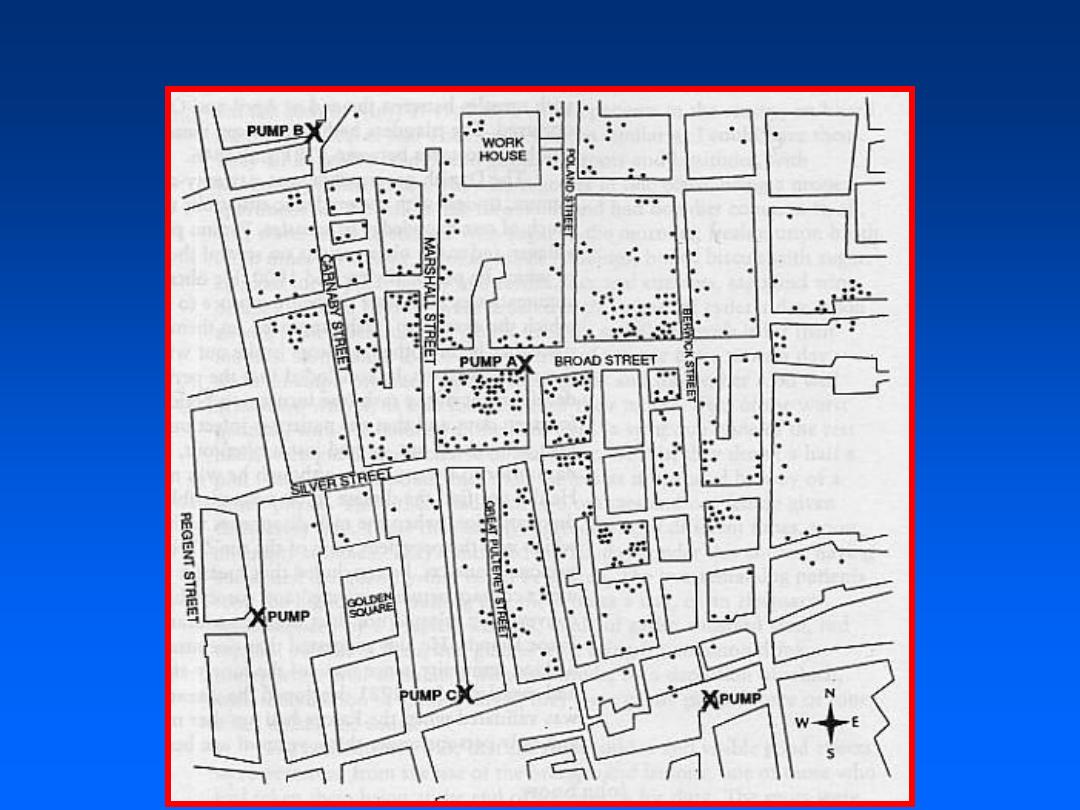
John Snow and Cholera

5 Criteria of Place
•
Rate observed in all ethnic groups
in the area
•
Rate NOT observed in persons of
similar groups inhabiting other areas
• Healthy persons entering area get ill
at same frequency
• People who leave do NOT show
similar levels
• Similar levels of infestation in other
species (if zoonotic disease)

Characteristics Relating to Place
• International
• Variation within countries
Urban-rural
Local
• Building Maps
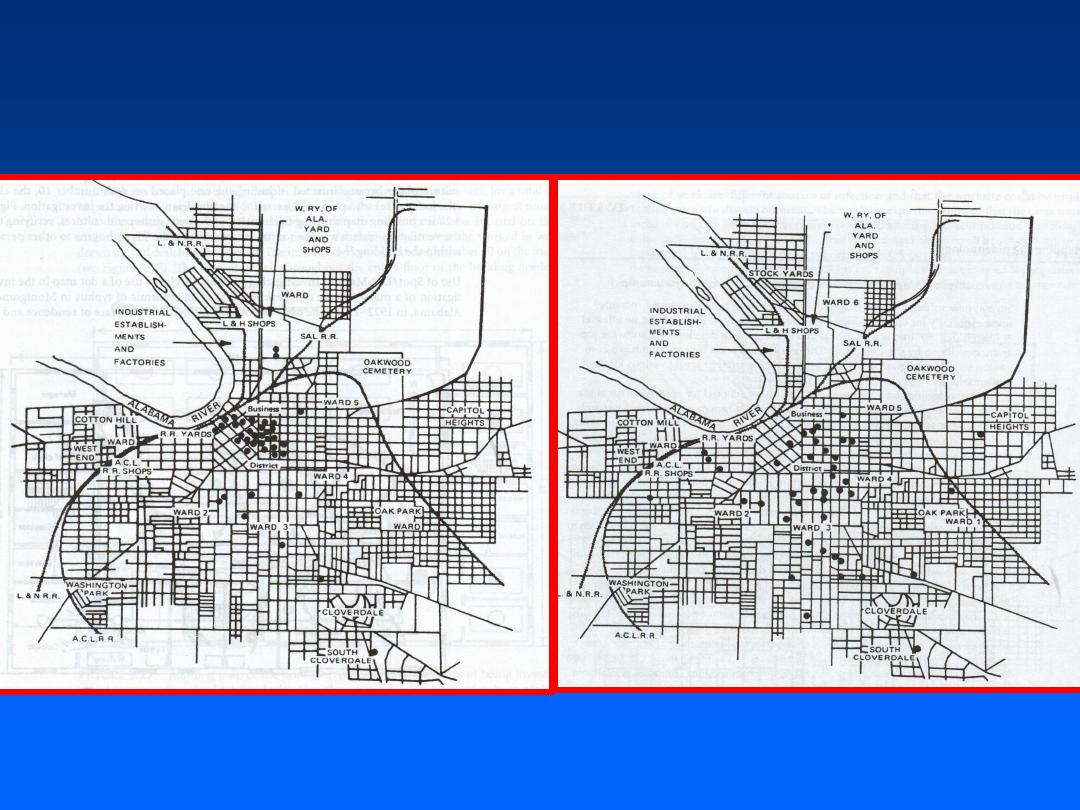
Local

Interactions of
Time and Place
• Time-place clustering
• Migration
